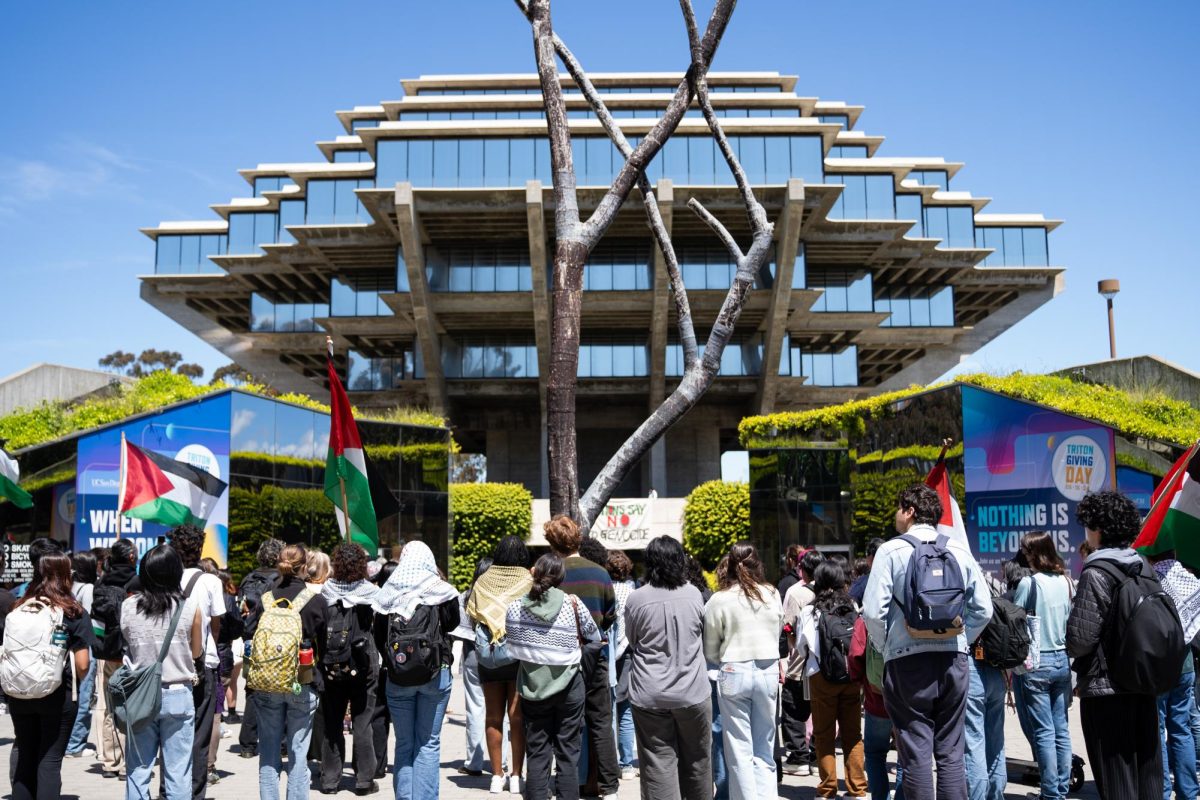Financial aid is expected to rise in accordance to an increase in student fees on UC and California State University campuses to an extra $135 and $72 per quarter, respectively. Both of the public university systems’ plans to hike student fees as a response to the state’s recently disclosed $34.8 billion budget shortfall included the provision that one-third of revenue generated by the increases will go back into financial aid.
According to statements from the UC Office of the President, this provision will make it unlikely that students from families with incomes below $60,000 will feel any impact from the increase.
“”It can’t be stressed enough: Aid will go up,”” said UC spokesperson Hannan Eisenman. “”Lower-income students will be protected and students will see their grants go up.””
For those who are above the $60,000 bracket, there are still a number of options available to offset the higher fees, according to Eisenman. These include loans and federal tax benefits, which he said many students may qualify for and which are likely to increase. These awards range from $800 to $3,000.
However, as demonstrated by student protests at both the UC and CSU meetings held mid-December at which the fee hikes were decided, not all students felt that a one-third revenue return to financial aid would be enough to shelter them from the impacts of fee increases. The UC Student Association held protest rallies at several of the UC campuses, including UCSD, UCLA and UC San Francisco, at the Dec. 17 teleconference meeting of the UC Board of Regents. According to UCSA Executive Director Adam Miller, keeping fees low to preserve accessibility has been one of the top items on the UCSA’s agenda.
“”The University of California does a good job for low-income students, but this will be putting a burden on middle-income students,”” Miller said. “”Students are already working more hours and taking out more loans than before, and these hard economic times are really the worst time to raise fees for students.””
Miller said that the fee increases could also deter prospective students from applying to UC schools.
“”This makes the price tag of the university that much higher,”” he said. “”We’ll still lose low-income students who might not know much about financial aid and who now won’t apply in the first place.””
Eisenman disagreed, citing the large fee increases of the early ’90s, during which, according to him, “”there was only a slight dip in enrollment of about 100 students.””
Vince DeAnda, director of the UCSD Financial Aid Office, echoed Eisenman’s sentiment.
“”Students shouldn’t use the increases as a reason for not going [to college],”” DeAnda said. “”We will be repackaging to cover increases.””
Many students throughout the UC and CSU campuses were unaware of the details of the increase because they were taking finals or out for winter break at the time of the decision. They displayed mixed reactions.
“”It’s OK because my grants will cover it, so I’m not worried,”” University of California at Riverside student Sarah Chung said.
University of California at Santa Cruz freshman Archna Jain, who is funding her education on loans, was more concerned.
“”It’s just going to be that much more for me to pay back,”” Jain said.
At C alifornia State University at Chico, according to freshman Alma Valencia, many students disapproved of the increase, circulating petitions against the new fees.
“”A lot of people have barely enough money, and I hear a lot of older students — re-entry students who are in their thirties — talking about dropping out,”” Valencia said. “”But it also affects young students; a junior friend told me she would drop out if fees were raised any more next year, and I’m afraid that my brother, who was talking about going back to college, might be discouraged now.””
UCSD students’ reactions were similarly mixed. Revelle College freshman Katie Sullivan said that she hopes that university officials will give students more information on the fee increases and financial aid.
“”I want to know exactly why fees are raised, and where the money is going,”” Sullivan said. “”Not just ‘here’s your bill’.””
John Muir College freshman Kelly McLean said that though she didn’t like the increases, she felt they were necessary and was happy that one-third of the fees will go to financial aid.
“”It’s great that they’re making sure that students can stay and that new students will keep coming,”” she said.
The UCSA, on the other hand, said they would prefer other solutions to the one-third plan.
“”We think it’s somewhat silly,”” Miller said. “”There must be more efficient ways to increase state revenue than this.””
Although DeAnda is expecting many students to contact the financial aid office with fee-related questions, he said that the office is not expecting a large increase in loan demands, explaining that demands increase each year as the cost of living rises.
“”Looking at the total cost of attendance, fees are really only a small percentage,”” DeAnda said. “”No doubt there is going to be more traffic, students asking more questions, but we’re just trying to maintain the status quo throughout the budget crisis, and I think we’ll be able to do that.””
Although DeAnda said he is “”slightly worried”” that cuts in budgets might affect the financial aid office’s employees, he reiterated the office’s mission is to do everything possible so that UCSD students themselves notice no change.
The office plans to send e-mails out during the first week of winter quarter to notify students of the repackaging of their financial aid.







